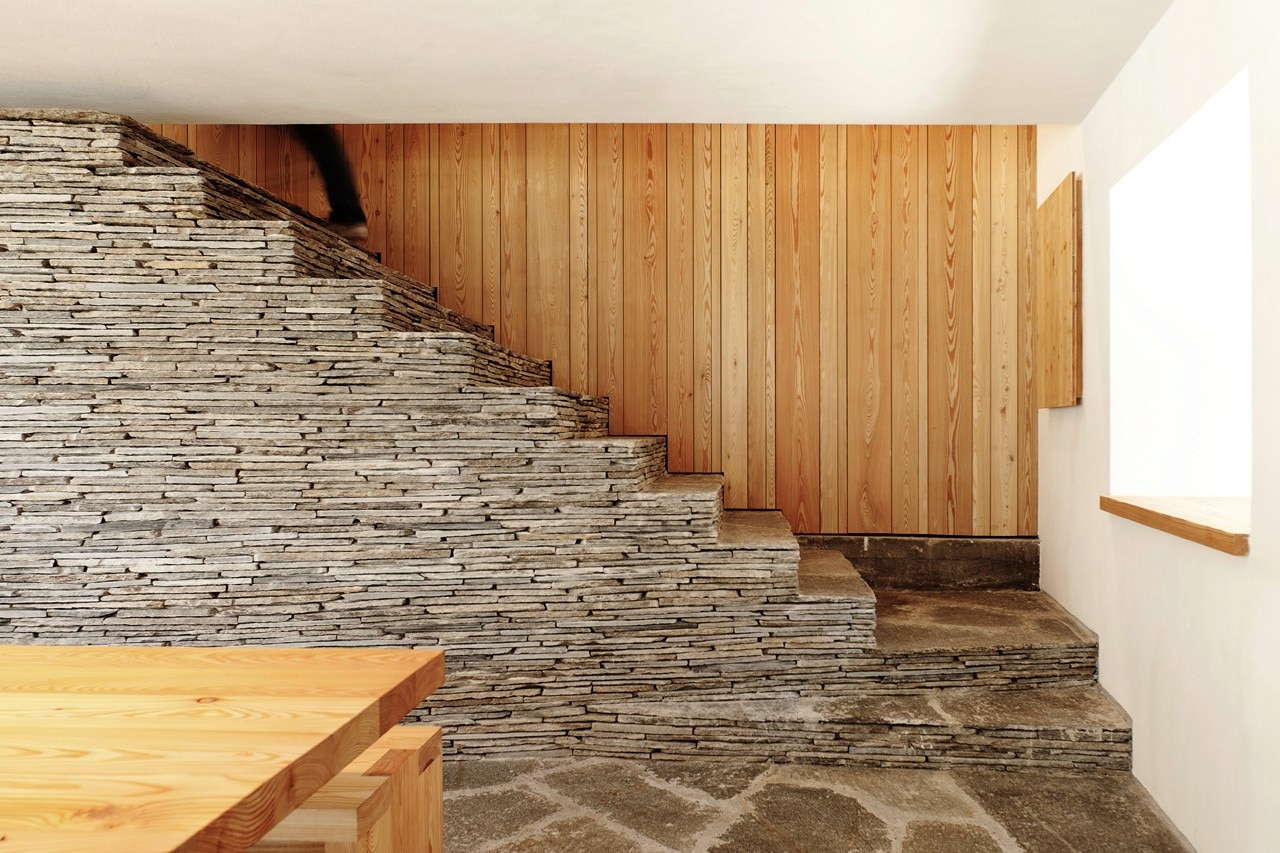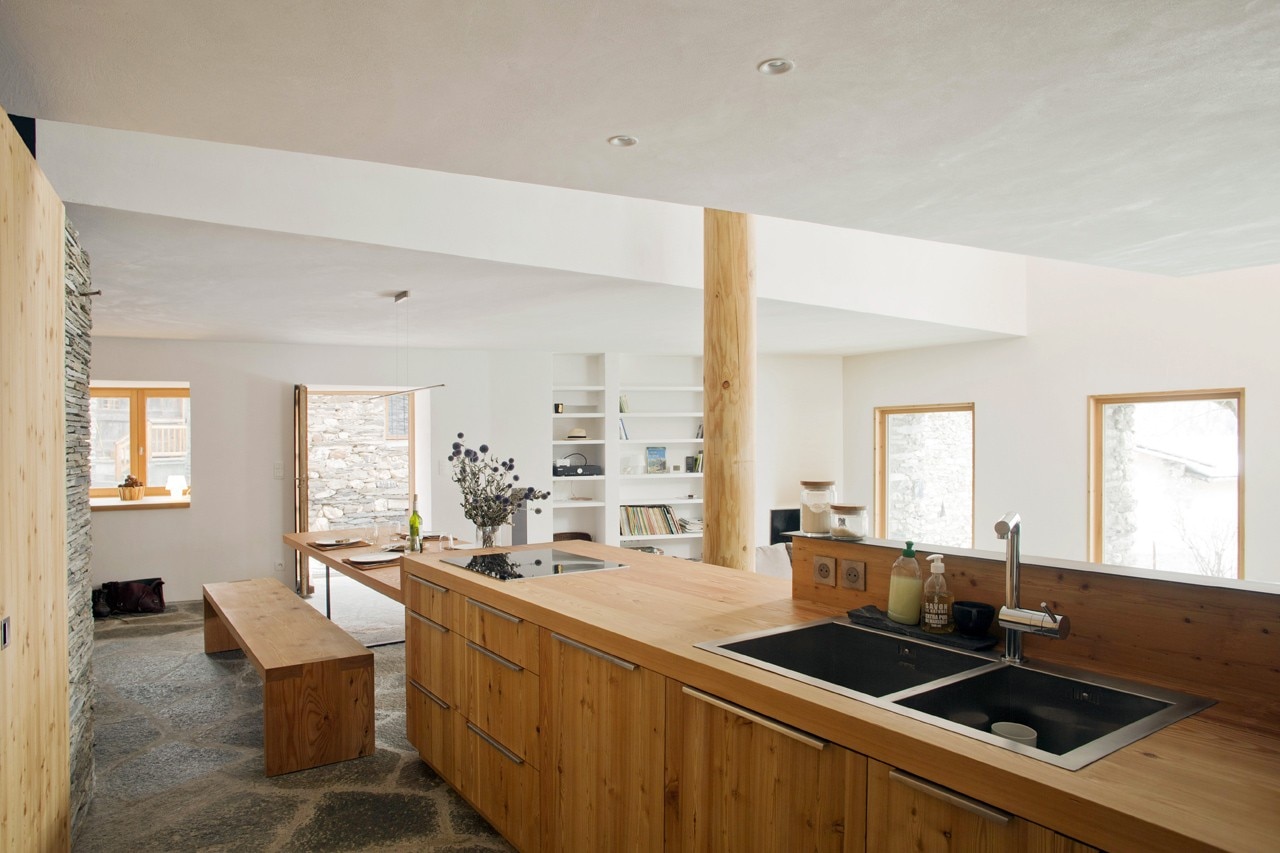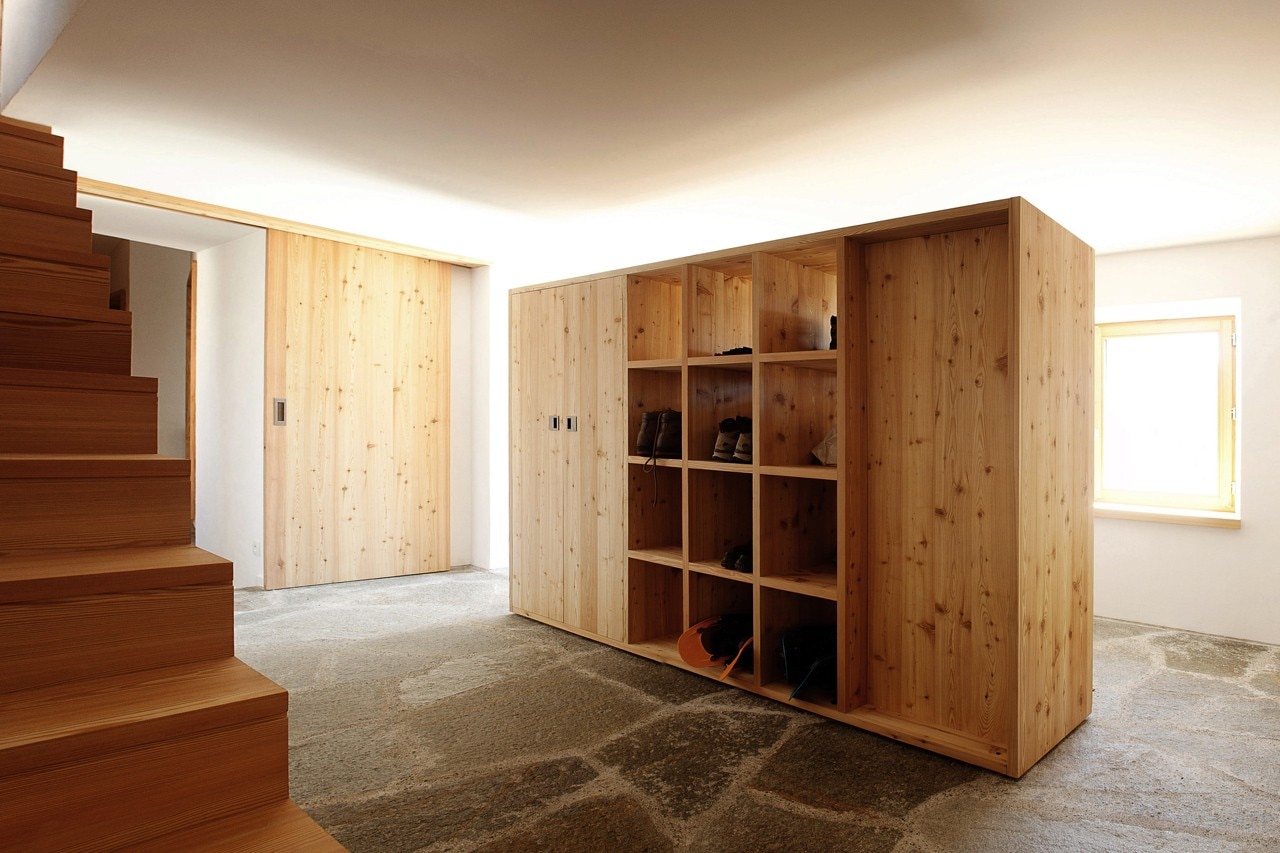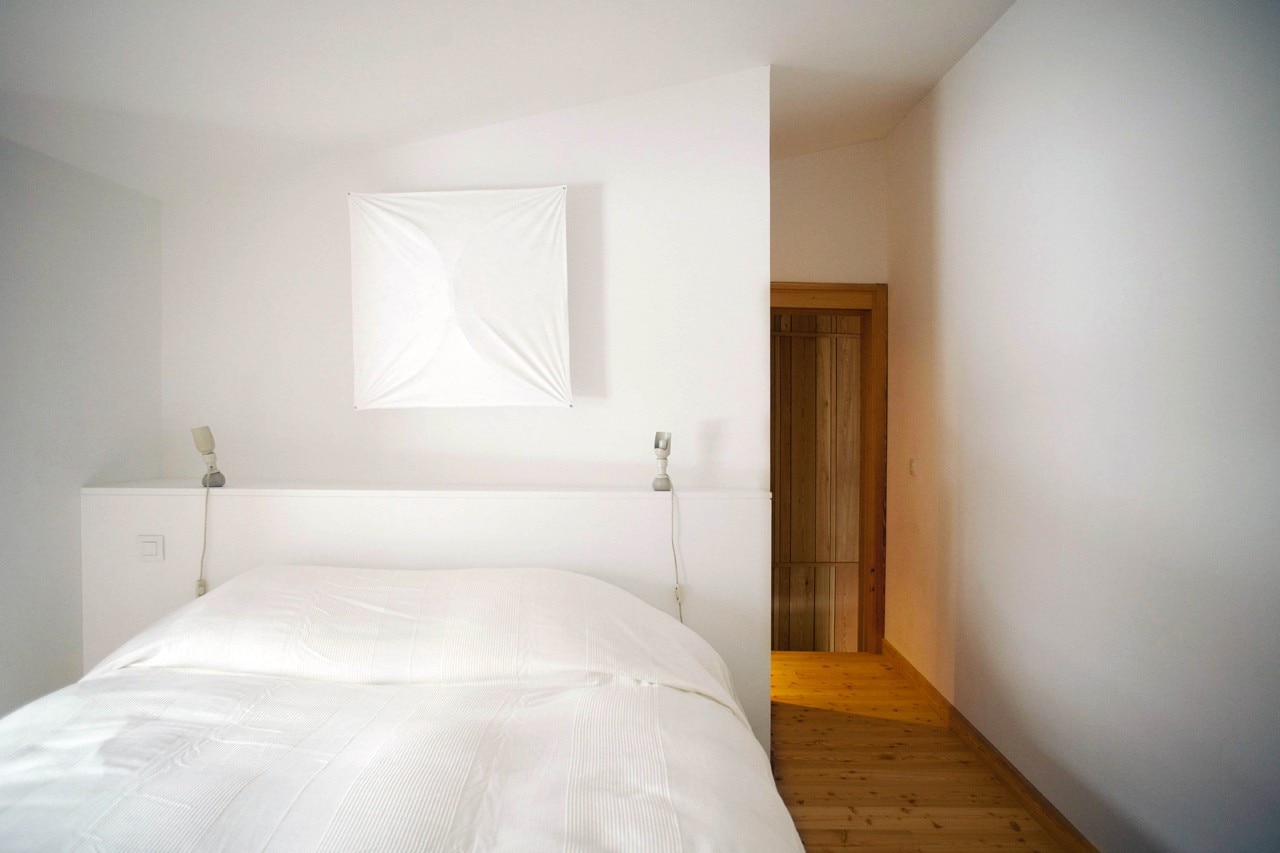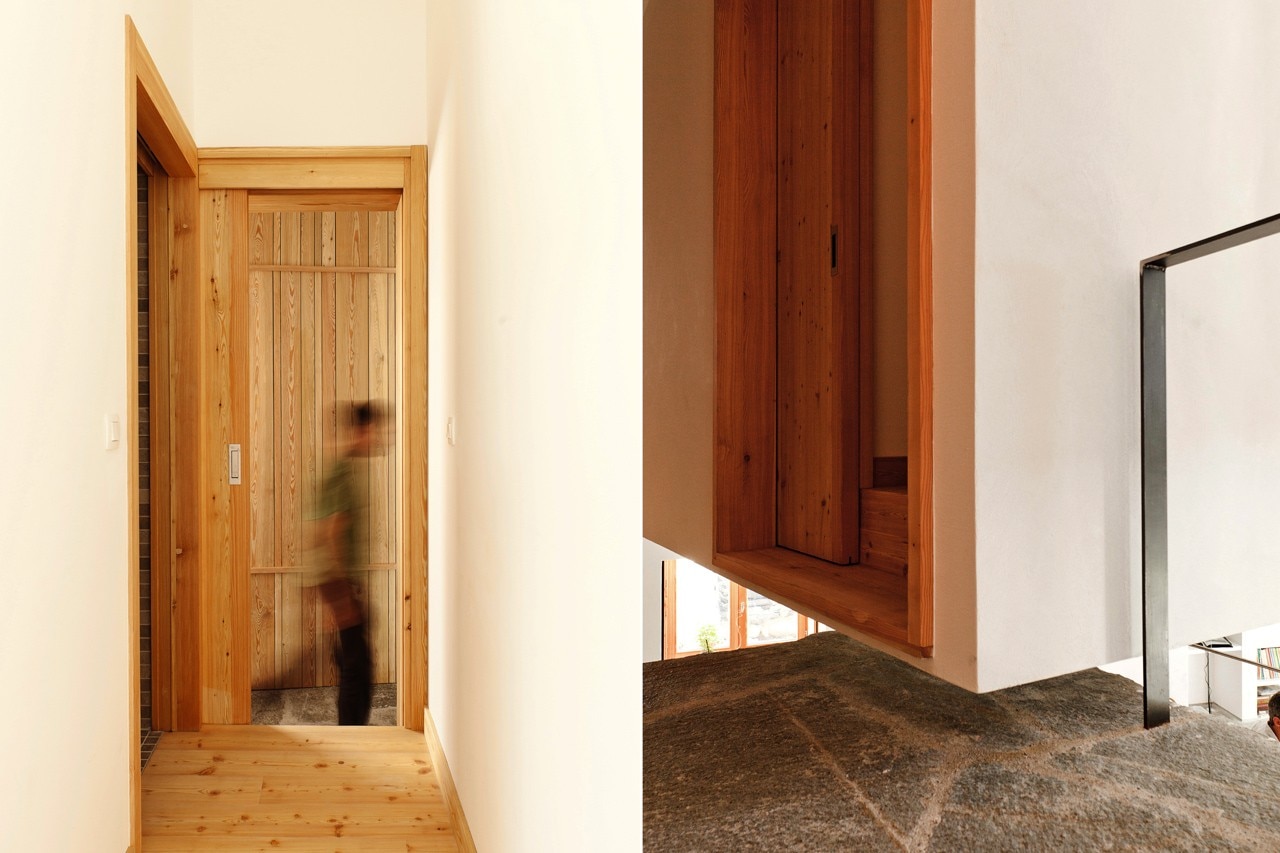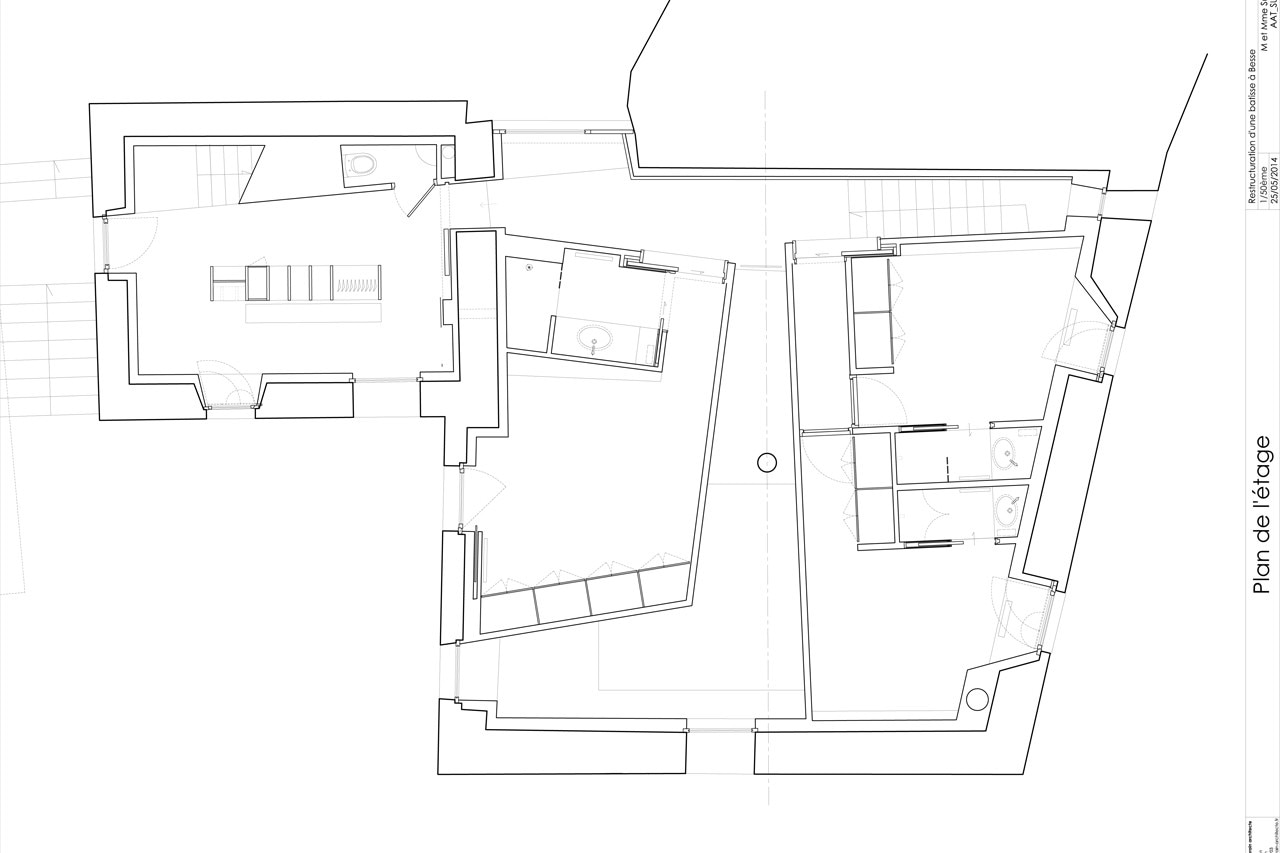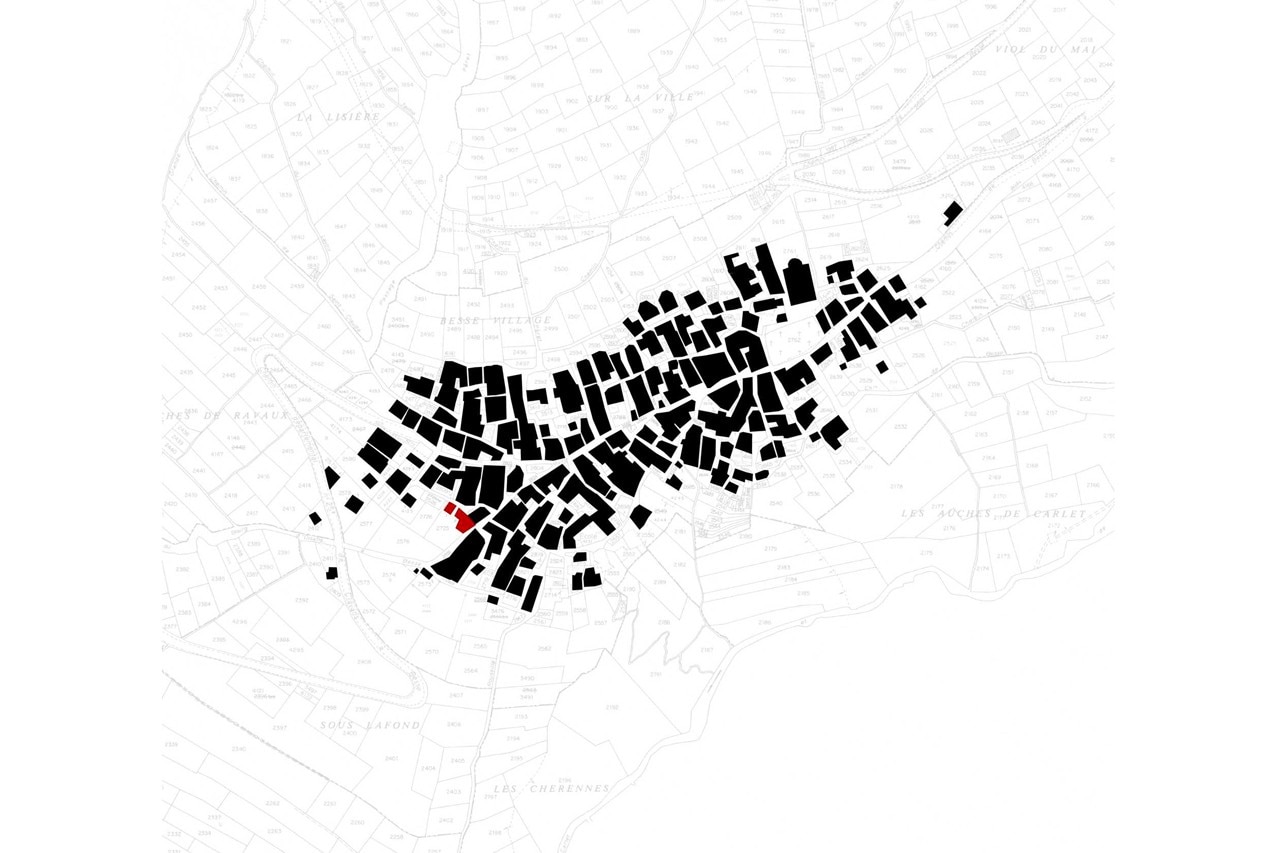They are separated by narrow steep staired streets allowing the water to flow when the snow melts. The walls are made whith flat stone slabs; they look dark and austere but they are brightened by the quartz veined granite.
The actual building is located at the south west extremity of the village and it opens on a large view to the south. Like the traditional houses of the place, it sets in the rather steep slope like a balcony opening to the landscape. The living part, downstairs, opens in rue Ste-Anne. Upstairs, the barn opens northward on rue des Bienheureux.
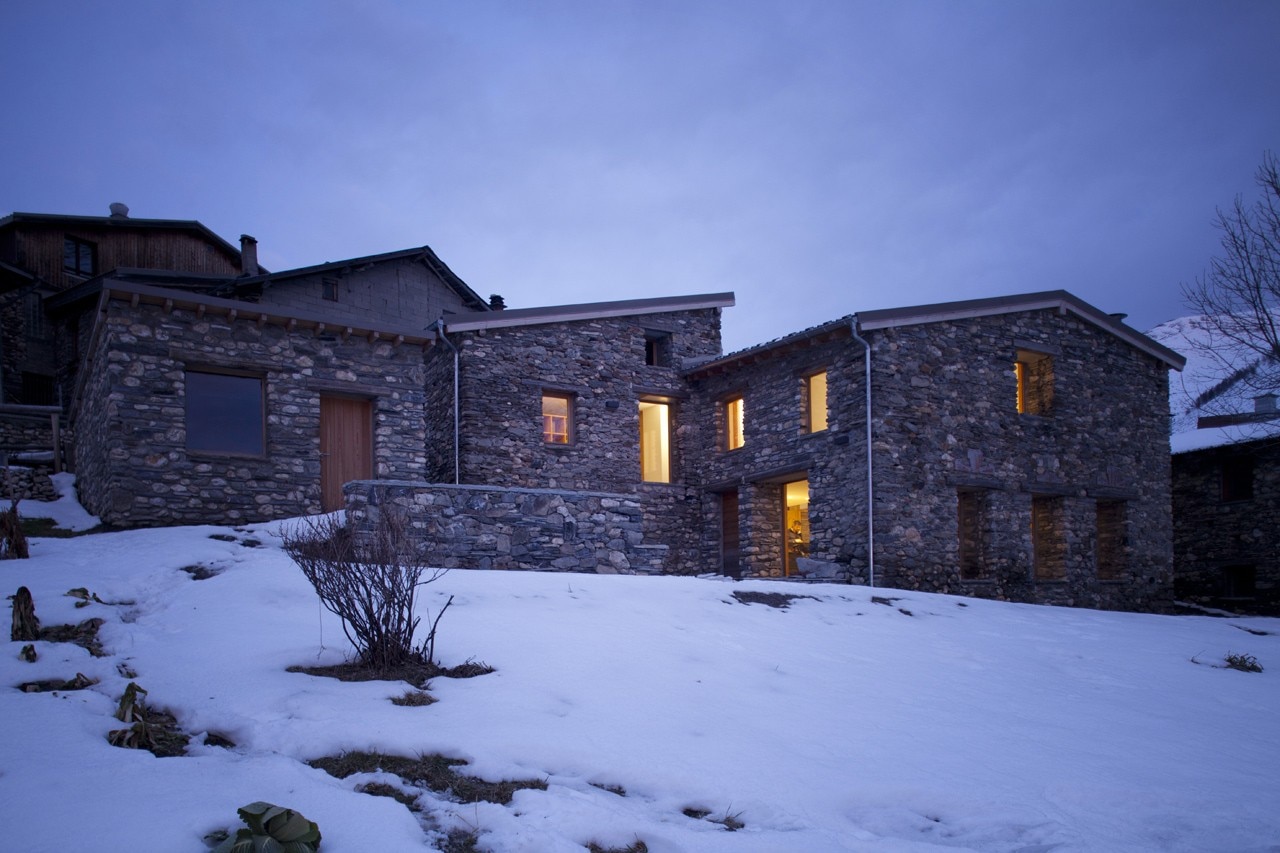
The first sketches rapidly showed how important it was to move the main entrance of the house to the high street, giving therefore the feeling to lengthen the streets of the village through the house.
In the same mind, we chose to use stone for the floors inside the house. We played with the layers, textures, colours (Luzerne stones and slates were mixed) and with a certain roughness of this material, so that you can imagine they have been there forever and will survive walls and white hanging volumes.
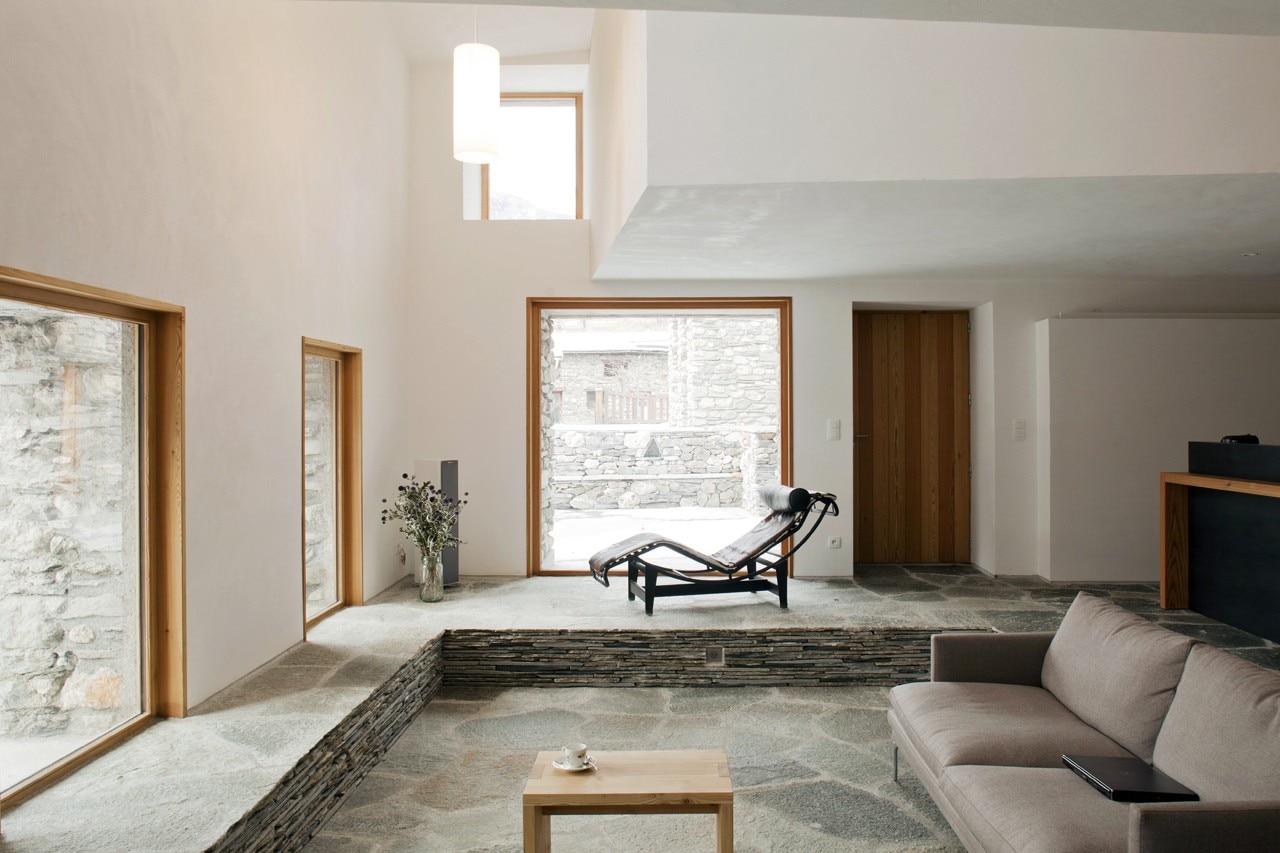
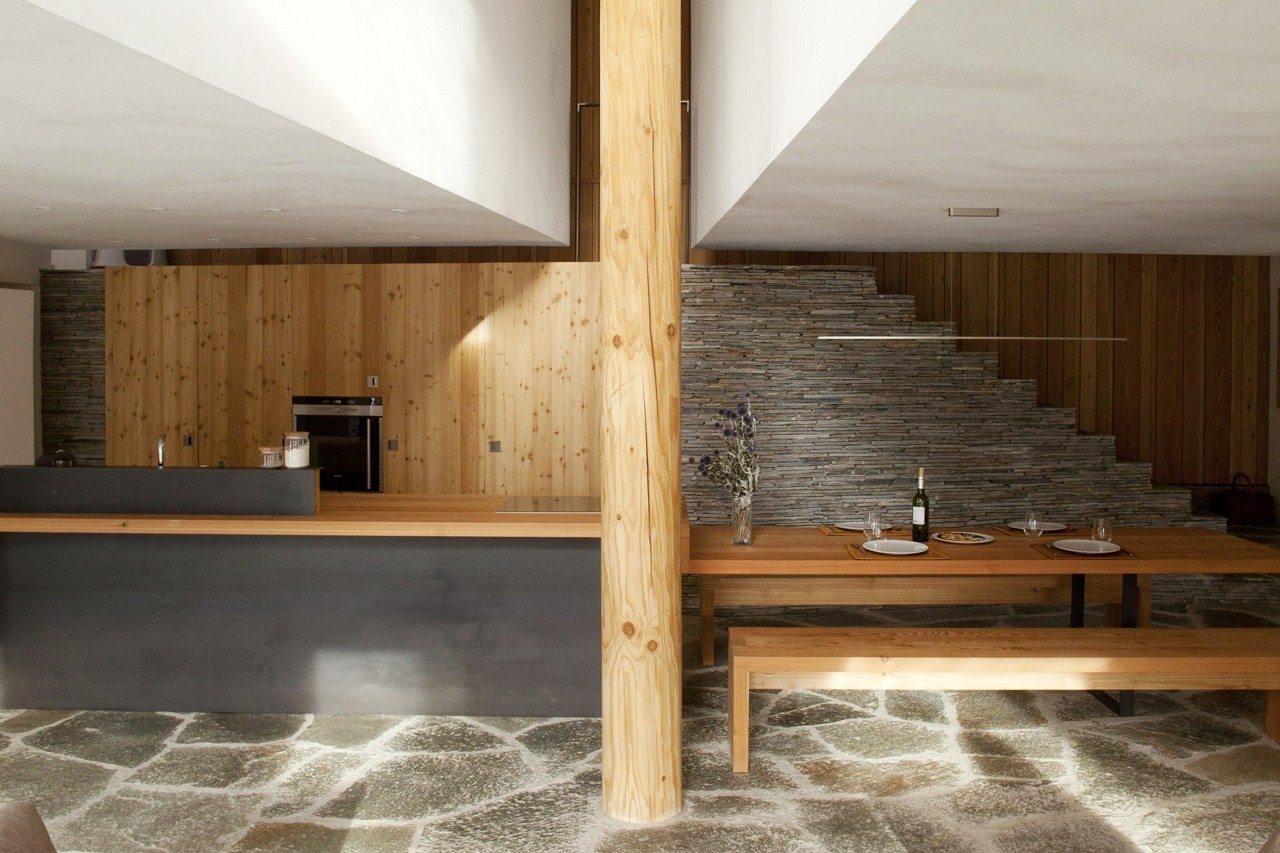
 View gallery
View gallery
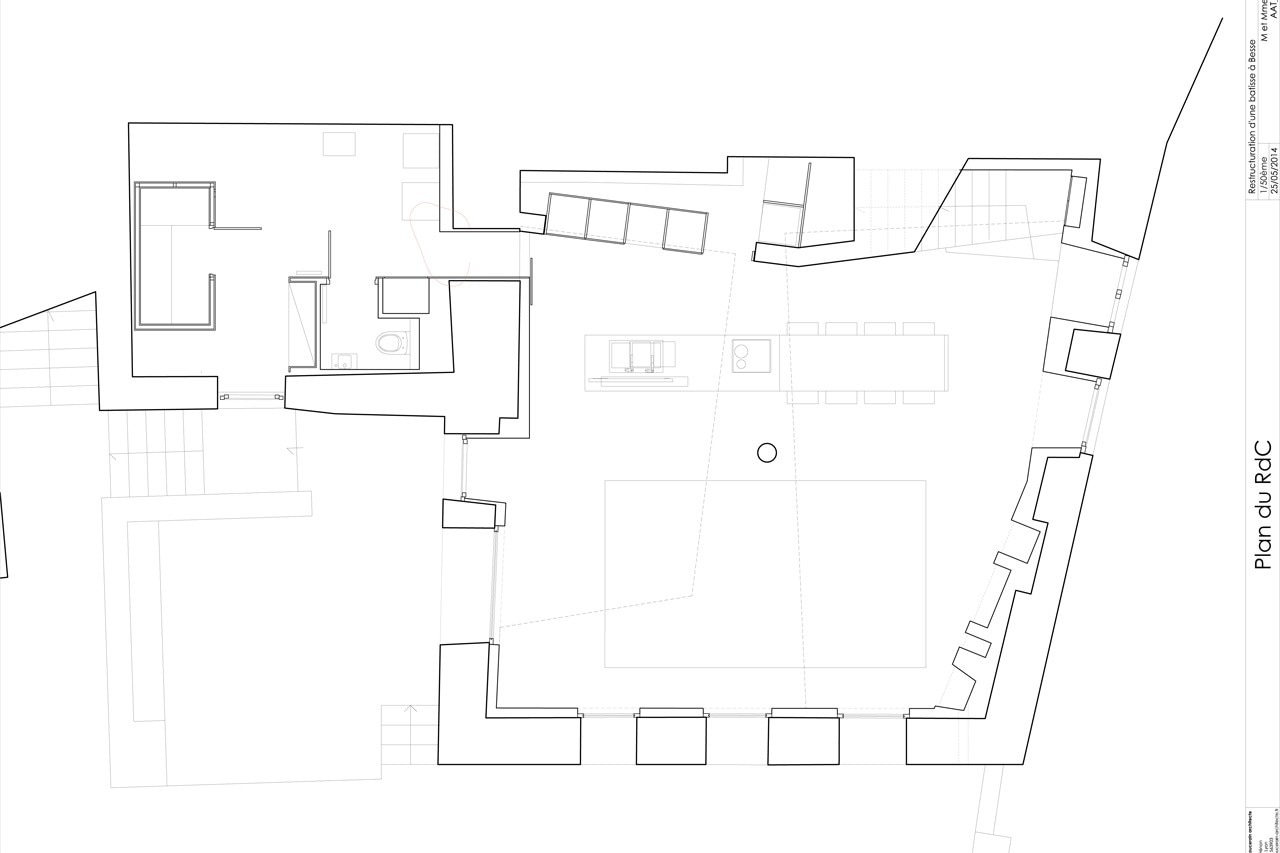
EXE_PlR0_50eme
House in the French Alps, Besse
Program: renovation
Architect: Pierre Doucerain Architecte
In collaboration with: Adrien Felix-Faure architect
Woodworks: Invernizzi (M.Berthuin)
Tilesetters: David Grange
Plasterer painter: Creadecor
Insulation: Bâti-vert
Electriciity: TMac
Plumber: Madisun
Mason, carpenter: Stgm
Completion: 2013


